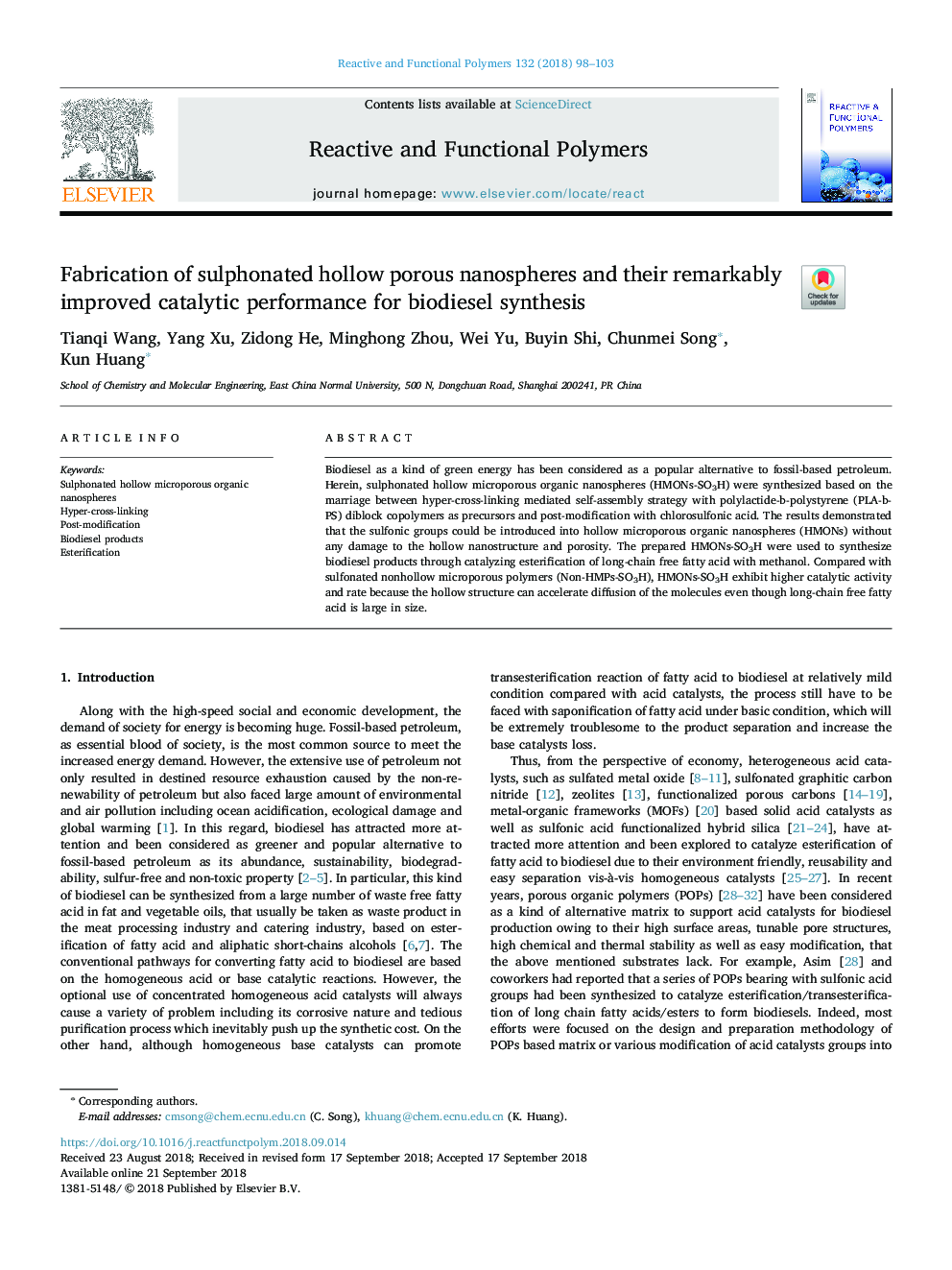| Article ID | Journal | Published Year | Pages | File Type |
|---|---|---|---|---|
| 11027036 | Reactive and Functional Polymers | 2018 | 6 Pages |
Abstract
Biodiesel as a kind of green energy has been considered as a popular alternative to fossil-based petroleum. Herein, sulphonated hollow microporous organic nanospheres (HMONs-SO3H) were synthesized based on the marriage between hyper-cross-linking mediated self-assembly strategy with polylactide-b-polystyrene (PLA-b-PS) diblock copolymers as precursors and post-modification with chlorosulfonic acid. The results demonstrated that the sulfonic groups could be introduced into hollow microporous organic nanospheres (HMONs) without any damage to the hollow nanostructure and porosity. The prepared HMONs-SO3H were used to synthesize biodiesel products through catalyzing esterification of long-chain free fatty acid with methanol. Compared with sulfonated nonhollow microporous polymers (Non-HMPs-SO3H), HMONs-SO3H exhibit higher catalytic activity and rate because the hollow structure can accelerate diffusion of the molecules even though long-chain free fatty acid is large in size.
Keywords
Related Topics
Physical Sciences and Engineering
Chemistry
Organic Chemistry
Authors
Tianqi Wang, Yang Xu, Zidong He, Minghong Zhou, Wei Yu, Buyin Shi, Chunmei Song, Kun Huang,
